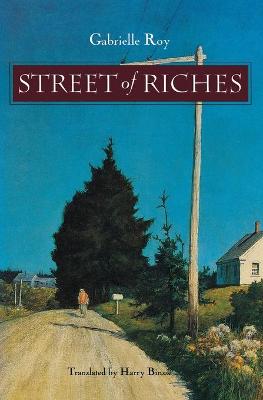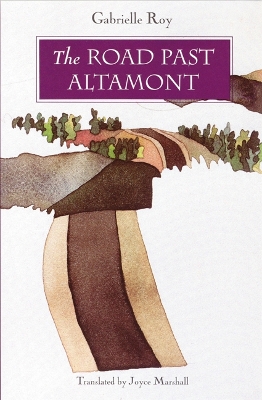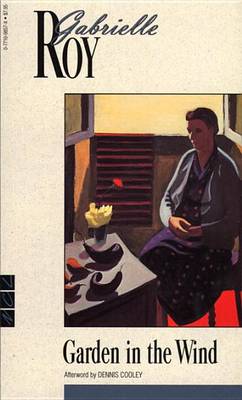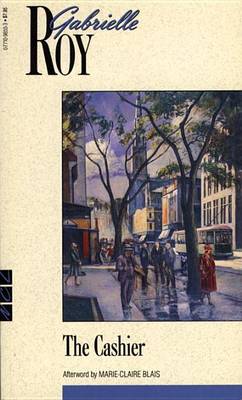New Canadian Library S.
7 total works
Set against the austere landscape of northern Labrador, Windflower is the poignant story of Elsa Kumachuk, a young Inuit woman torn between two worlds by the birth of her blond-haired, blue-eyed son. Unacknowledged by his father, an American GI, the child is welcomed into the Inuit community with astonishment and delight. Elsa, however, must come to terms with the conflicting values implied by her son’s dual heritage.
Gabrielle Roy’s last novel, Windflower is both a moving account of one woman’s tragic dilemma and a sensitive portrait of a society in transition.
Gabrielle Roy’s last novel, Windflower is both a moving account of one woman’s tragic dilemma and a sensitive portrait of a society in transition.
NOW A PENGUIN MODERN CLASSIC: An affecting story of familial tenderness, sacrifice, and survival, The Tin Flute is imbued with Roy's unique brand of compassion and compelling understanding.
The first among her repertoire of award-winning novels, The Tin Flute is Gabrielle Roy's sympathetic novel about a family's struggle to survive the Montreal slums of Saint-Henri, overcome poverty, and find love--all amidst the mounting tensions of the Second World War.
The first among her repertoire of award-winning novels, The Tin Flute is Gabrielle Roy's sympathetic novel about a family's struggle to survive the Montreal slums of Saint-Henri, overcome poverty, and find love--all amidst the mounting tensions of the Second World War.
Semiautobiographical and universal in appeal, Street of Riches is about a young girl's growing up in a suburb of Winnipeg, Manitoba. Here is Christine, the perceptive narrator of The Road Past Altamont (also a Bison Book), awakening to natural and sometimes terrifying beauty, to family history, to the nuances of social life, to sexuality, to selfhood. A mother's romantic yearning for freedom, a father's roving career as an immigration officer, a beautiful sister's early demise, a host of other in very human situations—all contribute to the way Christine will view the world as a writer.
First published in French in 1966, The Road Past Altamont pierces to the heart of a child's world, craeting a delicate, yet substantial network of impressions, emotions, and relationships. In her writing, Gabrielle Roy allowed "nothing extraneous or false to stand," according to the translator, Joyce Marshall. The literary style of Roy, whose fiction reflects her childhood on the Canadian prairie, has often been compared to that of Willa Cather. The Road Past Altamont takes a sensitive French-Canadian girl, Christine, from childhood innocence to maturity. Four connected stories reveal profound moments during her early years in the vastness of Manitoba. Christine's testament to Grandmother's creative power, her great adventure with an old gentleman at Lake Winnipeg and her clandestine one with a crude family of movers, her journey through time and space with aging Maman—all these characters and events convey Gabrielle Roy's preoccupation with childhood and old age, the passage of time and mystery of change, and the artist's relation to the world.
Few writers portray the dignity of people trapped by poverty or emotional isolation as compassionately as Gabrielle Roy does in the four stories of western Canada that comprise Garden in the Wind. The effortless craft and poetic sensitivity evident in all her writing are here in full abundance as she recounts the stories of a tramp who belongs to no one, a Chinese immigrant struggling to fulfill his dream, Doukhobor settlers fired by a vision of a new land, and a lonely woman who nurtures her small but splendid garden. Imbued with a poignant simplicity, these are stories of sheer artistry.
In Alexandre Chenevert, the Montreal bank teller trapped by his narrow environment and acutely aware of his loneliness, Gabrielle Roy has created a vivid and poignant portrait of an ordinary man and his attempts to transcend his circumstances and his fate.
Set in 1947 amid the crumbled dreams of the post-War world, and drawing on modern themes of personal alienation and of the restorative force of nature, The Cashier is a tour de force of characterization and empathy by a literary virtuoso.
Set in 1947 amid the crumbled dreams of the post-War world, and drawing on modern themes of personal alienation and of the restorative force of nature, The Cashier is a tour de force of characterization and empathy by a literary virtuoso.
The story of Where Nests the Water Hen is as pure as the lives of the people in it – and as unforgettable. Set in the remote wilderness of northern Manitoba, this sunny, tender idyll of daily frontier life captures, as few novels ever have, the spirit and the surroundings of the pioneers – not the adventurers and trailblazers who make the headlines, but rather the humble folk who follow after and remain, living out their lives in obscurity to keep the trails open.
Where Nests the Water Hen, Gabrielle Roy’s second novel, is a sensitive and sympathetic tale that captures both the innocence and the vitality of a sparsely populated frontier.
Where Nests the Water Hen, Gabrielle Roy’s second novel, is a sensitive and sympathetic tale that captures both the innocence and the vitality of a sparsely populated frontier.






